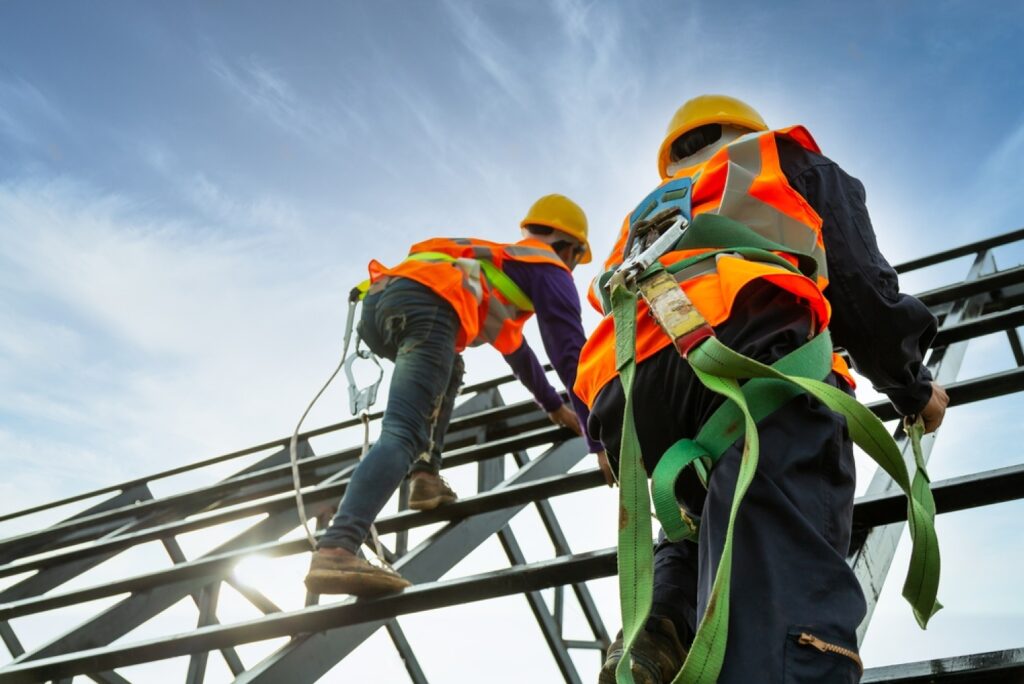
Working at heights is an integral part of various industries, from construction and maintenance to telecommunications and power generation. While these tasks are essential, they come with inherent risks, particularly the danger of falls from elevated positions. Ensuring the safety of workers in such scenarios is paramount, and this is where fall arrest lifeline solutions play a critical role. In this blog post, we’ll delve into the world of fall arrest lifelines, their importance in the Philippines, and how they contribute to safeguarding lives while working at heights.
Section 1: Understanding Fall Arrest Lifelines
Fall arrest lifelines are intricate systems designed to prevent or mitigate injuries that can occur due to falls from heights. These systems consist of lifelines, connectors, anchor points, and harnesses. Lifelines are typically made of high-strength materials and are strategically placed to provide a secure tie-off point for workers. When a fall occurs, the lifeline acts as a shock absorber, minimizing the impact on the worker’s body.
Section 2: Importance of Fall Arrest Lifelines in the Philippines
The Philippines, like many other countries, faces significant challenges related to working at heights. Accidents resulting from falls remain a serious concern, causing injuries and fatalities across industries. According to the Philippine Statistics Authority, falls from heights have been identified as a leading cause of work-related accidents. These accidents not only result in human tragedies but also have economic and social repercussions.
In response, there are legal and ethical obligations placed on employers to ensure the safety of their workers. Implementing effective fall arrest lifeline solutions is not just about compliance but also about valuing human lives.
Section 3: Types of Fall Arrest Lifeline Solutions
Fall arrest lifeline solutions come in various forms, each tailored to specific needs and scenarios. Horizontal lifelines are suitable for scenarios where workers need to move along a designated path, such as rooftops or suspended platforms. Vertical lifelines are ideal for situations where workers need to ascend or descend vertical structures, like towers or confined spaces. Cable systems and rigid rail systems offer additional options for different types of work environments.
Section 4: Factors to Consider When Choosing Lifeline Solutions
Selecting the appropriate fall arrest lifeline solution requires careful consideration of several factors. The nature of the work, the specific environment, the number of workers, and the frequency of use are all essential aspects to evaluate. Consulting with safety experts can provide valuable insights to make informed decisions, ensuring that the chosen solution aligns with both safety regulations and the unique demands of the job.
Section 5: Implementing Fall Arrest Lifelines in the Philippines
Implementing fall arrest lifeline solutions involves a comprehensive approach. Companies must not only choose the right equipment but also adhere to local safety regulations and standards. Proper installation, routine inspections, and maintenance are essential to ensure the continued effectiveness of the lifeline systems. Additionally, providing thorough training to workers on the correct usage of the lifelines is crucial for maximizing their safety benefits.
Section 6: Case Studies: Successful Implementation in Philippine Industries
Several Philippine industries have embraced fall arrest lifeline solutions to enhance workplace safety. A notable example is the construction sector, where fall-related accidents have significantly reduced after the implementation of lifeline systems. Telecommunications companies have also integrated lifeline solutions for tower maintenance, resulting in fewer accidents and improved worker confidence. These success stories underscore the positive impact of prioritizing safety measures.
Section 7: Future Trends in Fall Arrest Lifelines
As technology advances, fall arrest lifeline solutions continue to evolve. Smart safety equipment, enhanced materials, and user-friendly designs are emerging trends in the industry. These innovations promise even greater levels of safety and convenience for workers at heights. Staying informed about these developments can help companies make well-informed decisions when upgrading or implementing new fall arrest lifeline systems.
Takeaway
Fall arrest lifeline solutions are more than just equipment; they represent a commitment to the well-being of workers who perform tasks at heights. In the Philippines, where the risks associated with such work are evident, these solutions have a profound impact on reducing accidents and saving lives. By understanding the types of lifelines, considering important factors, and staying updated on industry trends, companies can ensure the highest standards of safety while safeguarding the heights.
